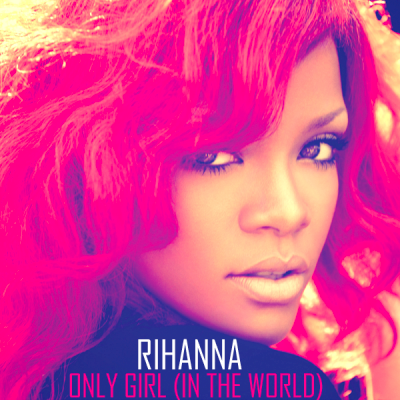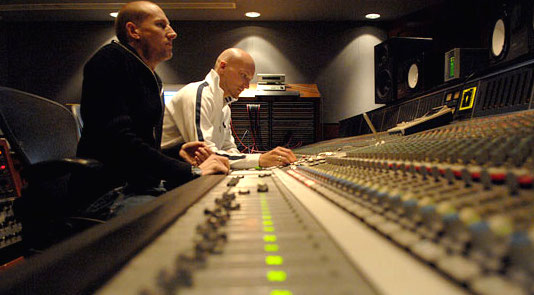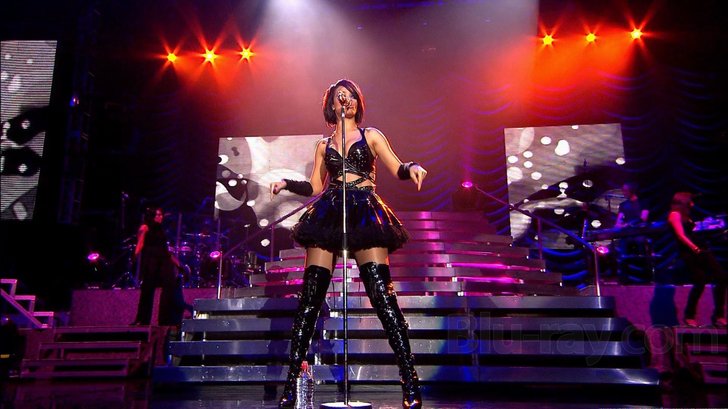Let’s Talk About Production Efficiency
Production Efficiency and Minimalism in Modern Pop
By Fab Dupont
The Birth of a Modern Pop Template
Before and After Only Girl In The World

If you have been paying attention to what is going on in modern popular music, you may have noticed that there is a before and an after the song called Only Girl In the World by Rihanna.
No?
Ask yourself, when was the first time you heard a pop song drop its full drum beat on the chorus?
Think.
Yes.
That's the one.
How much do you hear it now?
Every other song.
Let's discuss.
The Modern Pop Writing Process
The way pop songs are written these days tends to be the opposite of what most people think. It starts with the music, often called a 'beat', and then melody and lyrics are added to it, often by someone else than the person who came up with the 'beat'.
Often the song is finished, even mixed, before it has a real title or a vocal on it. The vocal is then dropped in later depending on who co-opts the song for their record.
The Challenges of the Process
This process can create problems, like disconnected melody and music, weird transitions due to the set mature of the music, odd mix with vocals not sitting right, etc, etc…And sometimes it just works great.
Purity, Efficiency, and Minimalism
Only Girl In The World is a lesson in purity, efficiency and minimalism. Produced by Stargate, Sandy Vee and mixed by Phil Tan, the song manages to be the perfect balance of simple and powerful.
Listen here
iTunes: https://itunes.apple.com/us/album/loud/id458437339
Spotify: https://play.spotify.com/track/3YJlTDtUXu1sGh8lunblkG?play=true&utm_source=open.spotify.com&utm_medium=open
Building Simplicity: How the Track Works
Structure as a Production Tool
Structurally it's a simple verse chorus with a bridge, like we have heard a million times, but the structure is used as a production tool in ways that were novel at the time. Intro and verses are the same exact thing except the verse adds a bass line that is not in the intro and that's about it.
Subtle Harmonic Movement
The melody after bar 5 of the verse suggests a modal change but it's very subtle and since nothing budges under it, it just flows through without raising questions.
It is a good way to allow for variety without breaking the hypnotic feel of the arpeggio
(Try and figure what mode Rihanna's melody suggests independently of the root chord).

Sparse, Yet Powerful
Notice how sparse the verse production is: kick, stereo clap, shaker, signature synth arpeggio and that little zap sound in the middle that create a pickup to the otherwise square beat.
No hihat, no subdivision except for the shaker.
And yet it grooves.
The arpeggio and its delays are the backbone of the pocket on the verse.
Simple and powerful.
The Genius of the Chorus Drop
The Iconic Beat Drop
And then it happens: the beat drop out on the chorus, for a whole 8 bars.
Wait! No! 16 bars!
Bold Production Choices
I don't know how much clout it took to push the idea through to the marketing and radio teams at Rihanna's label but someone had the power to do so.
Dropping the beat on the downbeat of the first chorus makes it sound huge.
Extending the drop for 16 bars instead of the 8 that everyone expects makes it sound otherworldly.
The Delayed Drop Technique
It's a classic Dance Music delayed drop technique but it had not been done like this for a pop radio song before.
There is no bottom, no bass drum, no bass for 8 bars.
Then the drum-and-bass style beat comes in, but still no bottom, and then the big payoff hits. *
And it keeps the song on top of the charts for weeks on end (because people want to get that feeling again and again. If you have not tried it, it is very educational to be in a club and to watch people react to these kinds of things. Try it before you produce your next track. That kind of first hand experience of the impact of production tricks is the reason why good DJs have risen to the top of the production scene for Pop Music).

The Power of Subtraction
Notice the difference in texture between the 'broken' chorus and the full form one.
On the broken chorus, everything feels horizontal, everything has a tail, things are on hold.
When the beat drop in again after 16 bars, anything remotely pad like is discarded, the bass changes tone and becomes twice as fat as the verse. It also gets side-chained by the bass drum, again a Dance Music thing, to create forward motion.
There are few instruments: drums, bass, square wave synth, vocals. The biggest lift here is the combo of bringing the beat back in and loosing anything 'horizontal' in the production, at the same time. Either technique would not have achieved the same effect on their own.
The usual tendency of producers, when they want to make something lift, is to add something big. Few think of removing something. This team did. And did it well.
Structural Tricks and Listener Psychology
Structure as Sonic Design
If one wants to be analytical (you do, right?), the chorus acts both as pre-chorus and chorus. It is the same chord structure, with the same melody arranged completely differently, and played back to back.
Think about it for a sec.
Great use of structure twisting as a production tool.
It really works.
Repetition That Feels Fresh
The second verse is a perfect copy paste of the first verse. It still feels fresh because of it's sparse quality and stark contrast with the chorus. We have had time to crave that arpeggio again by the time it comes back.
As long as no one is bored, why change the channel?
Tightening the Structure
And then it happens again. The beat drops out again on the second chorus. I'm sure that generated some extra meetings in high places. The genius here is that instead of mirroring the first chorus exactly, the beat drops back in where you expected it in the first place. But since you have been deceived the first time, it comes in as a surprise and lifts even more.
Very smart.
They even cut the structure down by one full chorus, bringing the bridge in after 16 bars (The first prechorus/chorus system is 24 bars).
Deception, deception…
Again the structure is used as a production tool here and helps shape the journey of the listener through essentially copy pasted parts without ever getting old.

The Bridge and the Payoff
The Minimal Bridge
The bridge is even more minimal, with a nice nod off to Eurythmics's Sweet Dreams.
Bass drum and side chained bass synth with a discreet enhancing of the melody with a string-like patch. (I suspect the melody was derived from the part that was already part of the beat when the melody/lyrics writer first heard it)
Notice how the drum-and-bass beat that helped stave off the hunger for the full bass drum on bar 9 of the first chorus is brought back in half way through, as is, to sustain the bridge until the fermata that leads into the final ad-libs.
Also notice that after the bridge the chorus comes in right away (No broken down purgatory, the bridge gave us that already).
Final Chorus and Ad-libs
The only part that only happens once in the song is that cool synth high note that appears after the first round of the last two choruses. It helps link the last chorus to the ad-lib part (Over chorus production, to keep it simple) by being the common thread.
A Confident Ending
Also notice the length of the song at 3.56. It's about 30 seconds longer than similar songs (Especially at the time). They could have ended the song at 3.30 very easily but the team decided to add an ad-lib tag, probably because the track felt great and they were confident it would get played as is.
They also treat us to a cool cold ending with the same nice harmonic turnaround that there is at the end of every chorus.
What more to ask?

The Subtle Details That Make It Work
No Fills, Just Force
Another fun thing to notice on this song is the absence of drum fills. Transitions are ended by brute force, like between chorus and verse or by a big stereo 'woosh' (reused every time). It's cool, discreet and does the trick without getting in the way of the vocal.
Sound Design and Details
As a matter of fact, there are quite a few sound-effect like parts that help make the song special. The zap sound shapes the whole groove (take a second to notice the difference between verse and chorus parts. It's in the middle, playing upbeats before the claps). Also there is a big explosion on the downbeat of the bridge (reused later if you are paying attention).
Vocal Space and Throw Effects
It's also good to take a second to listen to how the different reverb and delay throws on the vocals to fill the sparse musical space (the bridge is easier for that). Even though the arrangement is designed to be simple, you will probably discover new gems with every listen. It does not get old.
Lessons in Pop Minimalism
The Art of Pop Minimalism
Every art form has its flavor of minimalism. This song is a great example of that for Pop Music. It is minimalistic in its economy of structure, in its reusing of production elements and in its starkness of track count. All of which are very hard to achieve, let alone pass through the music business filter at this level.
Recognizing the Skill
I hear a lot of musician deriding the music they hear on the radio and, to be fair, there is a vast amount of questionable tracks playing everyday. However, when a song like Only Girl In The World comes along, it is important to recognize the value in the exceptional skill and vision it took to make it happen.
Listen long and often. There are lessons for every style of production in this track.
Fab Dupont.